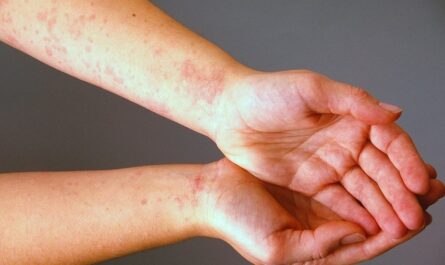Researchers at Osaka University have made a significant breakthrough in the field of bioprinting, improving the ability to print live cells into complex, well-defined 3D structures. This advancement has the potential to revolutionize regenerative medicine and animal-free toxicological testing.
Bioprinting, first introduced in 1988 using a standard inkjet printer, has the potential to repair damaged organs and test medical hypotheses. The process involves depositing a cell-containing ink through a printing nozzle to create 3D structures. However, printing soft structures has been challenging, despite their advantages in cell growth.
Previous attempts to print soft structures involved printing them on a support material to improve structural integrity. However, this often resulted in contamination of the printed structures. The goal of this study was to find a way to solidify the ink without causing contamination.
The researchers at Osaka University developed a new approach where a 3D printer dispenses both the cell-containing ink and a printing support material alternately. The support material contains hydrogen peroxide, which triggers the gelation process of the ink. This rapid gelation prevents contamination during the printing process. Once the support material is removed, the 3D structures remain intact.
The team successfully printed various complex structures, including inverted trapezium geometries and human nose shapes with bridges, holes, and overhangs. The cells within these structures remained viable for at least two weeks and demonstrated cell adhesion and proliferation.
“This is an important step in engineering human cell assemblies and tissues,” says Shinji Sakai, senior author of the study. “Further optimization and incorporating blood vessels into the artificial tissue will enhance its resemblance to physiological architectures.”
The potential applications of this bioprinting technique are vast. It has significant implications for regenerative medicine, pharmaceutical toxicology, and other fields. With further advancements, researchers hope to improve the fidelity of bioprinting and create more complex and functional tissues.
The ability to print live cells in 3D structures accurately opens up new possibilities in the field of regenerative medicine. Imagine a future where damaged organs can be repaired by growing new ones in the lab. Researchers at Osaka University have made significant progress in this area by overcoming limitations in cell growth and geometrical fidelity in bioprinted architectures.
Bioprinting, a technique first reported in 1988 using a standard inkjet printer, has the potential to revolutionize medicine and toxicological testing. The process involves depositing a cell-containing ink through a printing nozzle to create 3D structures. However, printing soft structures has been challenging due to difficulties in maintaining cell viability and structural integrity.
In a recent study published in ACS Biomaterials Science and Engineering, the researchers at Osaka University found a solution to these challenges. They developed a new approach that involves alternating the dispensing of the cell-containing ink and a printing support material through a 3D printer. The support material contains hydrogen peroxide, which triggers the gelation process of the ink. This rapid gelation prevents contamination during the printing process.
The team successfully printed various complex structures, including inverted trapezium geometries and human nose shapes with bridges, holes, and overhangs. The cells within these structures remained viable for at least two weeks and demonstrated cell adhesion and proliferation.
“This is a significant step forward in engineering human cell assemblies and tissues,” says Shinji Sakai, senior author of the study. “By further optimizing the process and incorporating blood vessels into the artificial tissue, we can improve its resemblance to physiological architectures.”
The implications of this breakthrough are enormous. Regenerative medicine can benefit from the development of functional tissues that closely mimic biological structures. Pharmaceutical toxicology can also benefit from the ability to test substances on 3D bioprinted structures, reducing the reliance on animal testing.
Moving forward, the researchers plan to further optimize the ink and support materials to enhance the fidelity of bioprinting. The inclusion of blood vessels into the artificial tissue will be a crucial next step in creating more complex and realistic structures.
The future of bioprinting holds great promise. With advancements in this technology, it may one day be possible to repair or replace damaged organs with lab-grown tissues. The ability to print live cells in precise, complex structures brings us closer to achieving this goal.
Note:
- Source: Coherent Market Insights, Public sources, Desk research
- We have leveraged AI tools to mine information and compile it



